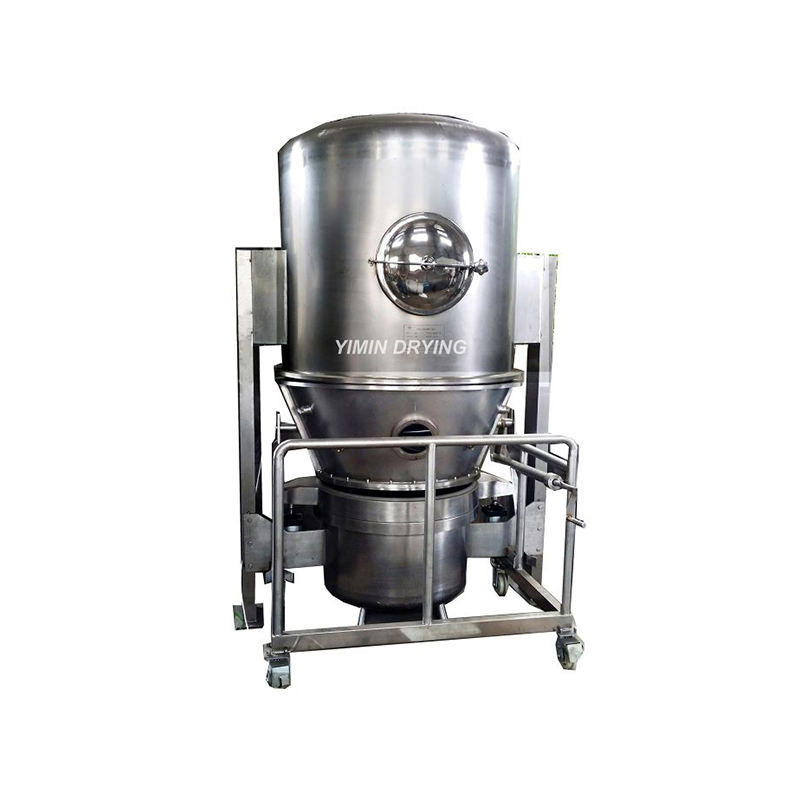Understanding the Working Principle and Applications of Fluid Bed Dryers
A Fluid Bed Dryer operates based on the concept of fluidization, which is a process where solid particles are made to behave like a liquid through the introduction of a gas or air flow. In the case of the fluid bed dryer, the material to be dried—often in granular or powder form—is placed on a perforated plate or mesh. Hot air is then blown through the plate, causing the particles to float, creating a fluid-like effect. This dynamic behavior allows for excellent heat transfer between the air and the particles, ensuring even and fast drying.
One of the primary reasons the fluid bed dryer is so effective is the increased surface area of the material exposed to the hot air. The suspended particles constantly move and agitate, preventing clumping and ensuring that each particle receives consistent heat. The process is highly efficient, with moisture being removed from the material as it passes through the hot air stream. The key to the operation is controlling the airflow rate, temperature, and air distribution, all of which must be optimized to ensure that the drying process is uniform and that the material is dried to the desired moisture content.
The main advantage of the fluid bed dryer is its ability to deliver consistent results in a relatively short amount of time. Since the particles are suspended in air, they are exposed to heat evenly, unlike traditional drying methods, where some particles may be exposed to more heat than others, leading to inconsistencies. This makes fluid bed dryers particularly useful in industries where precision is critical, such as pharmaceuticals, where even slight variations in moisture content can affect the efficacy of a drug.

In the pharmaceutical industry, fluid bed dryers are commonly used to dry granules, which are created during the process of tablet or capsule manufacturing. The granules must be dried thoroughly and uniformly before they can be compressed into tablets or filled into capsules. If the drying process is not done correctly, it can lead to poor-quality products that do not meet the required standards. The fluid bed dryer’s ability to dry the granules quickly and evenly helps ensure that the final pharmaceutical products are of the highest quality.
The food industry also relies heavily on fluid bed dryers for drying ingredients such as spices, powders, and grains. Drying is an essential process in food production, as it helps preserve the ingredients and maintain their flavor, color, and nutritional value. Traditional drying methods such as sun drying or oven drying are often less efficient and can result in uneven moisture content, which can negatively impact the quality of the food product. Fluid bed dryers offer a more controlled and efficient method, making them a popular choice for food manufacturers who need to maintain product consistency.
In the chemical industry, fluid bed dryers are used to dry various chemicals, powders, and pellets that require consistent moisture levels. For example, in the production of fertilizers, the drying process must be carefully monitored to prevent clumping or degradation of the product. The fluid bed dryer’s uniform drying capability ensures that these issues are avoided. Similarly, in the production of powdered chemicals, controlling the moisture content is crucial to achieving the desired chemical properties and maintaining the product's stability.
Energy efficiency is another significant advantage of fluid bed dryers. Traditional drying methods often involve long drying times and high energy consumption. However, because fluid bed dryers use hot air to efficiently dry materials in a short amount of time, they help reduce both energy usage and operational costs. The system's ability to recycle and reuse air further enhances its energy efficiency, making it an environmentally friendly option for industries looking to minimize their carbon footprint.
Despite their advantages, fluid bed dryers do have some limitations. One challenge is that certain materials may not fluidize well due to their size, shape, or moisture content. To mitigate this, manufacturers may adjust the design of the fluid bed dryer, incorporating features such as air distribution systems or vibration mechanisms to promote better fluidization. Additionally, certain materials may require pre-treatment to ensure that they dr



 English
English русский
русский عربى
عربى Türk
Türk




